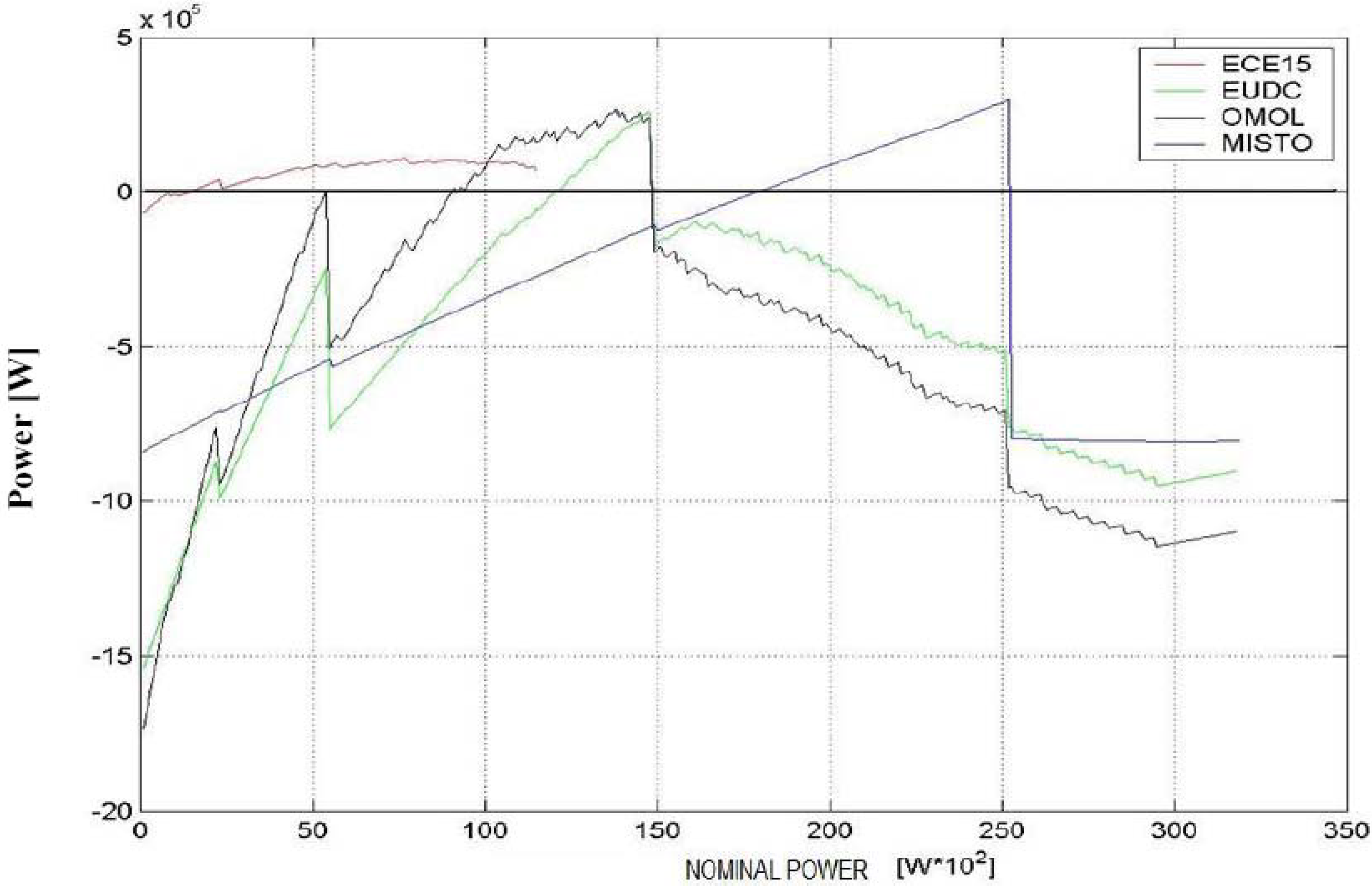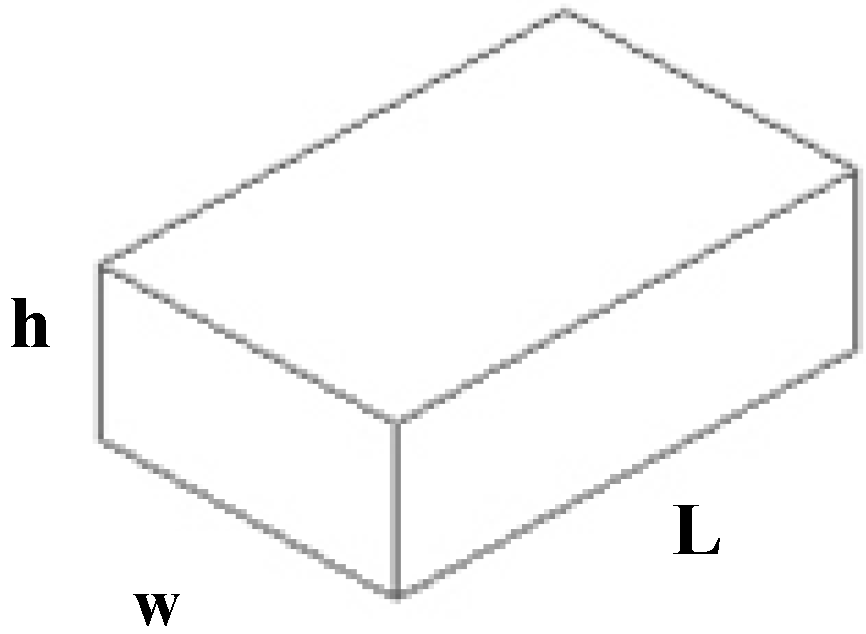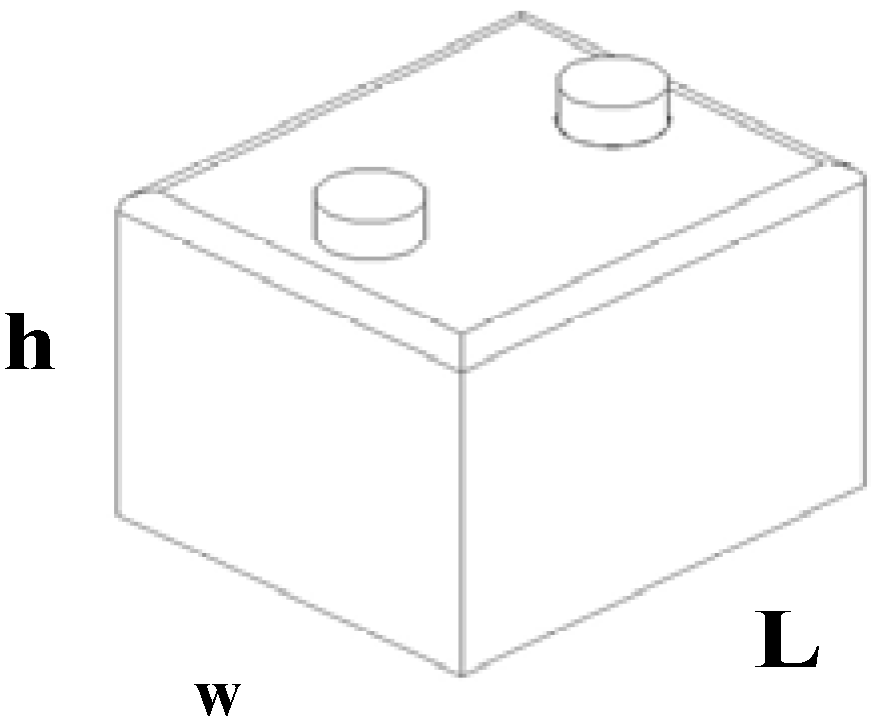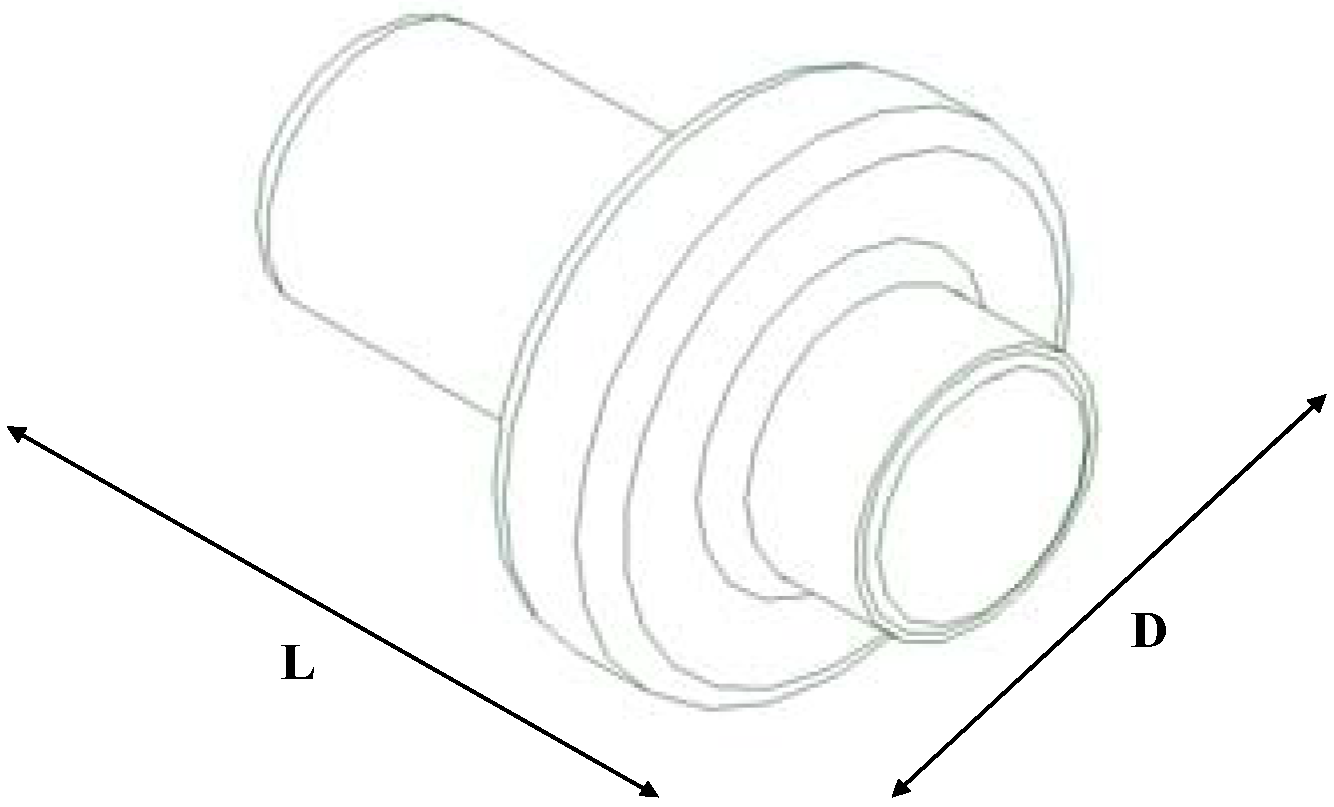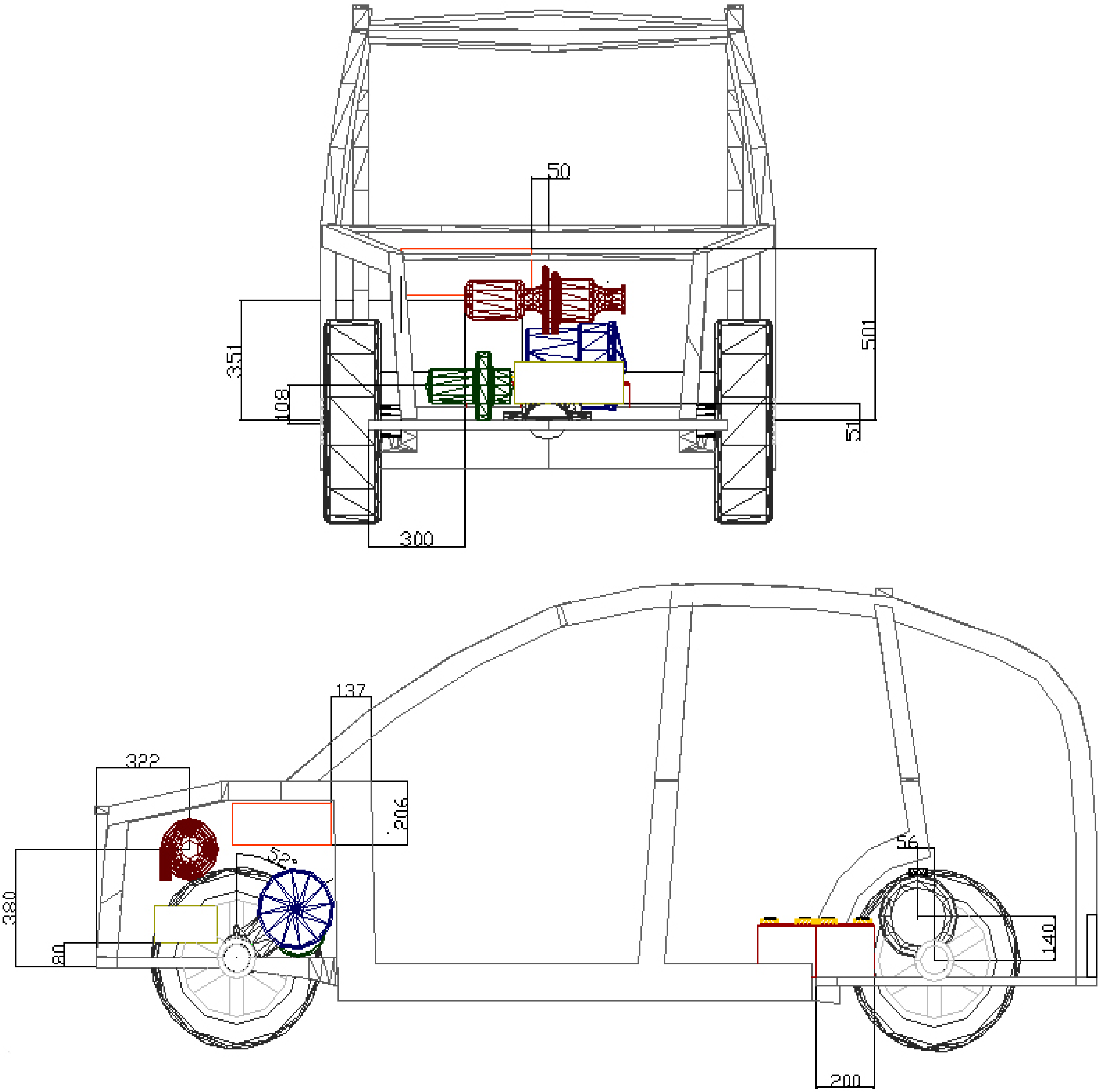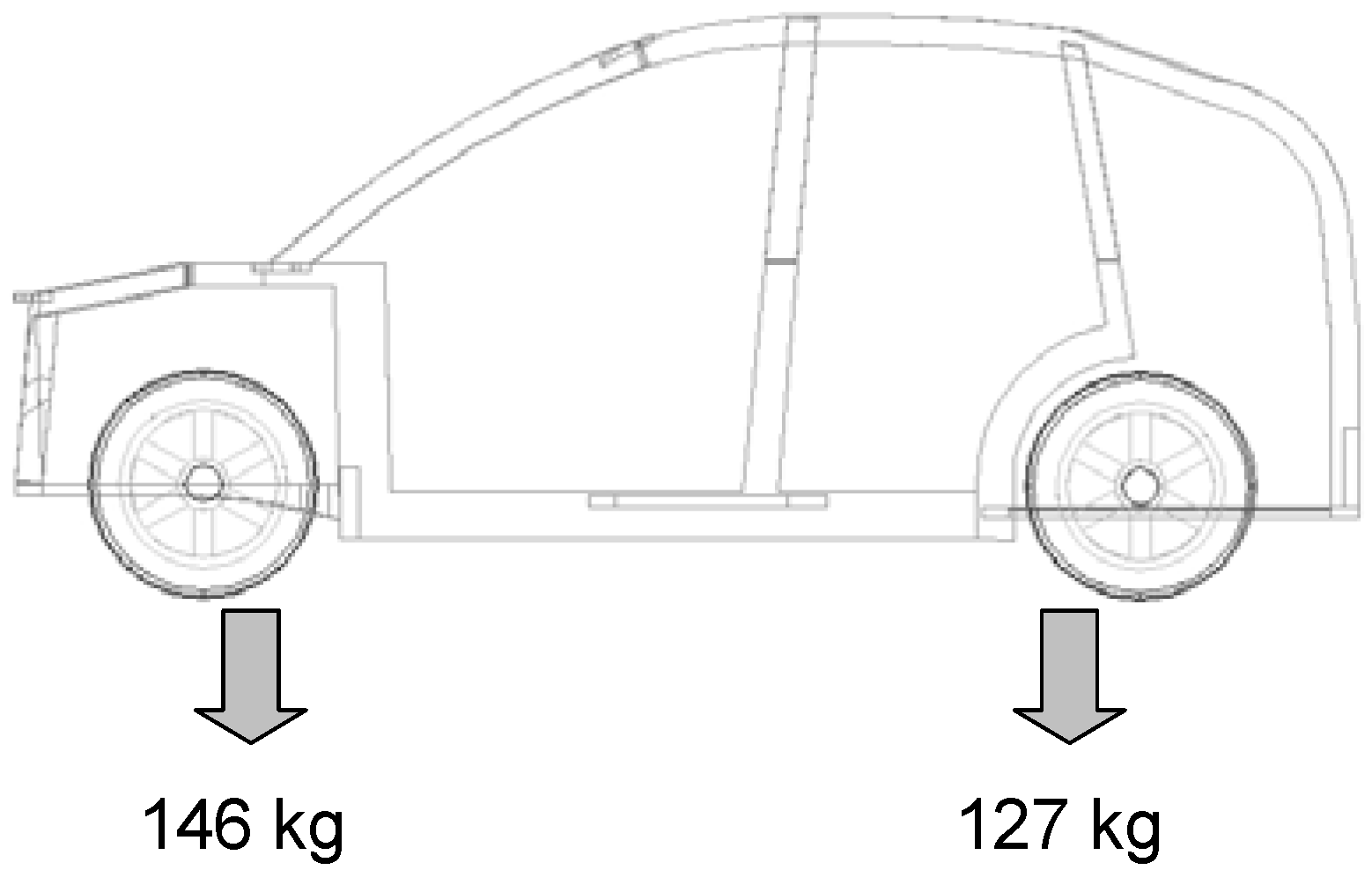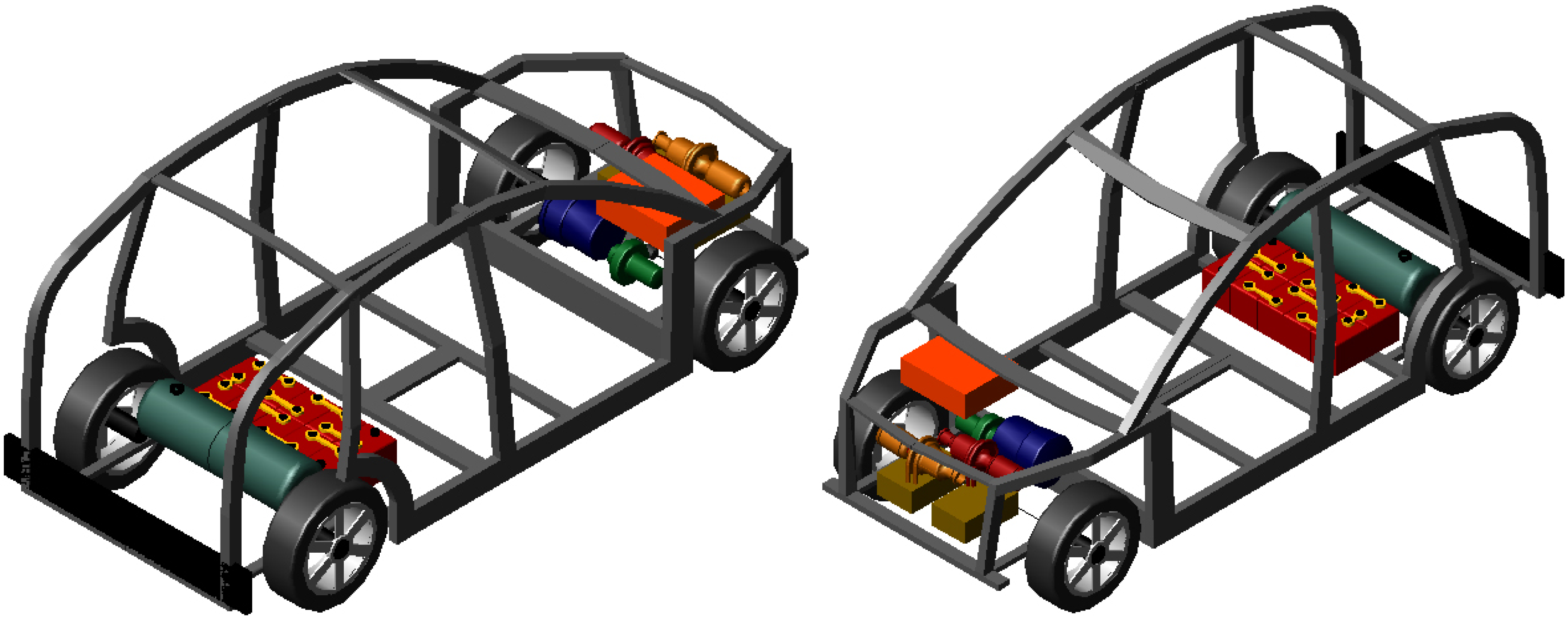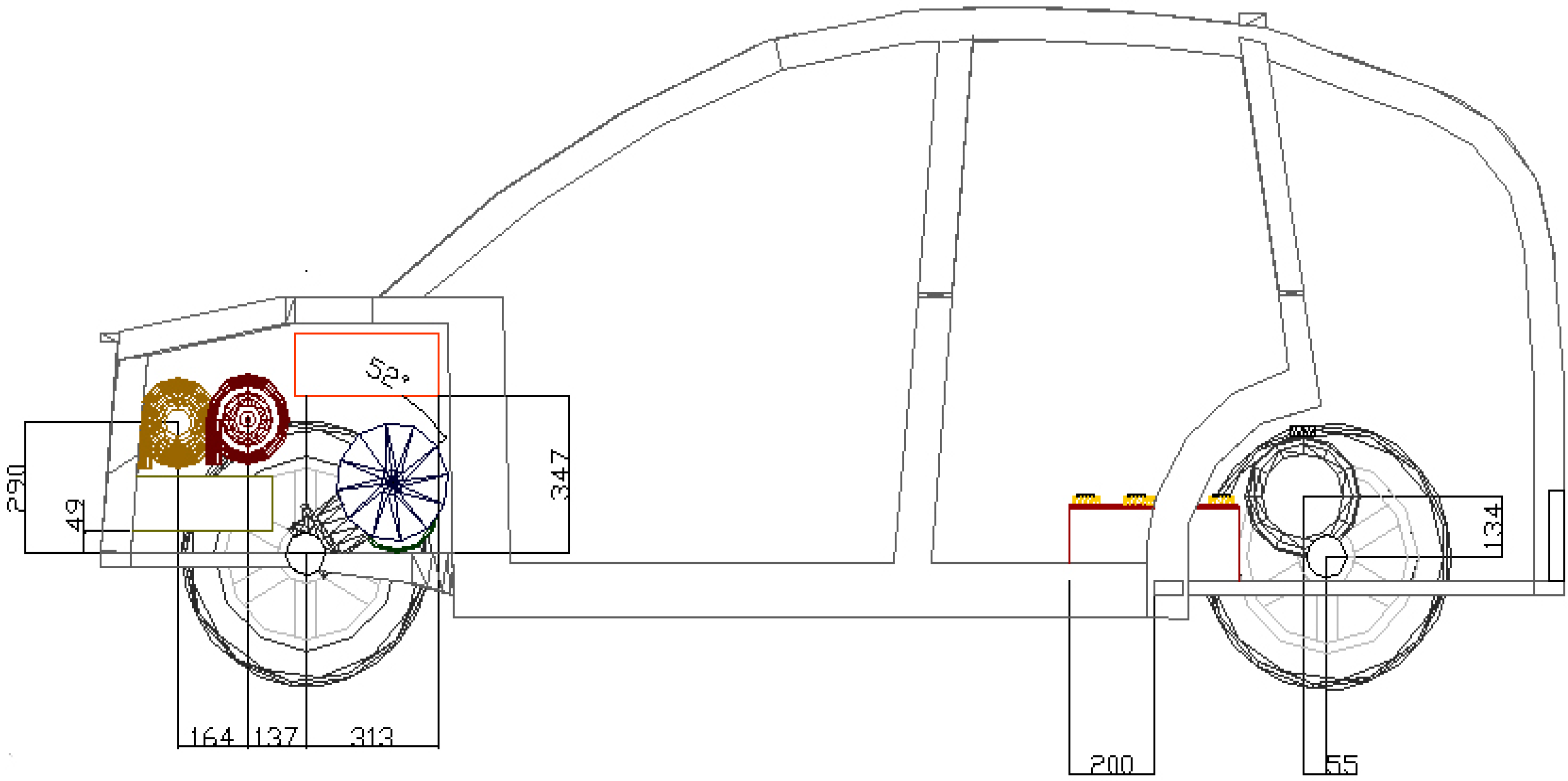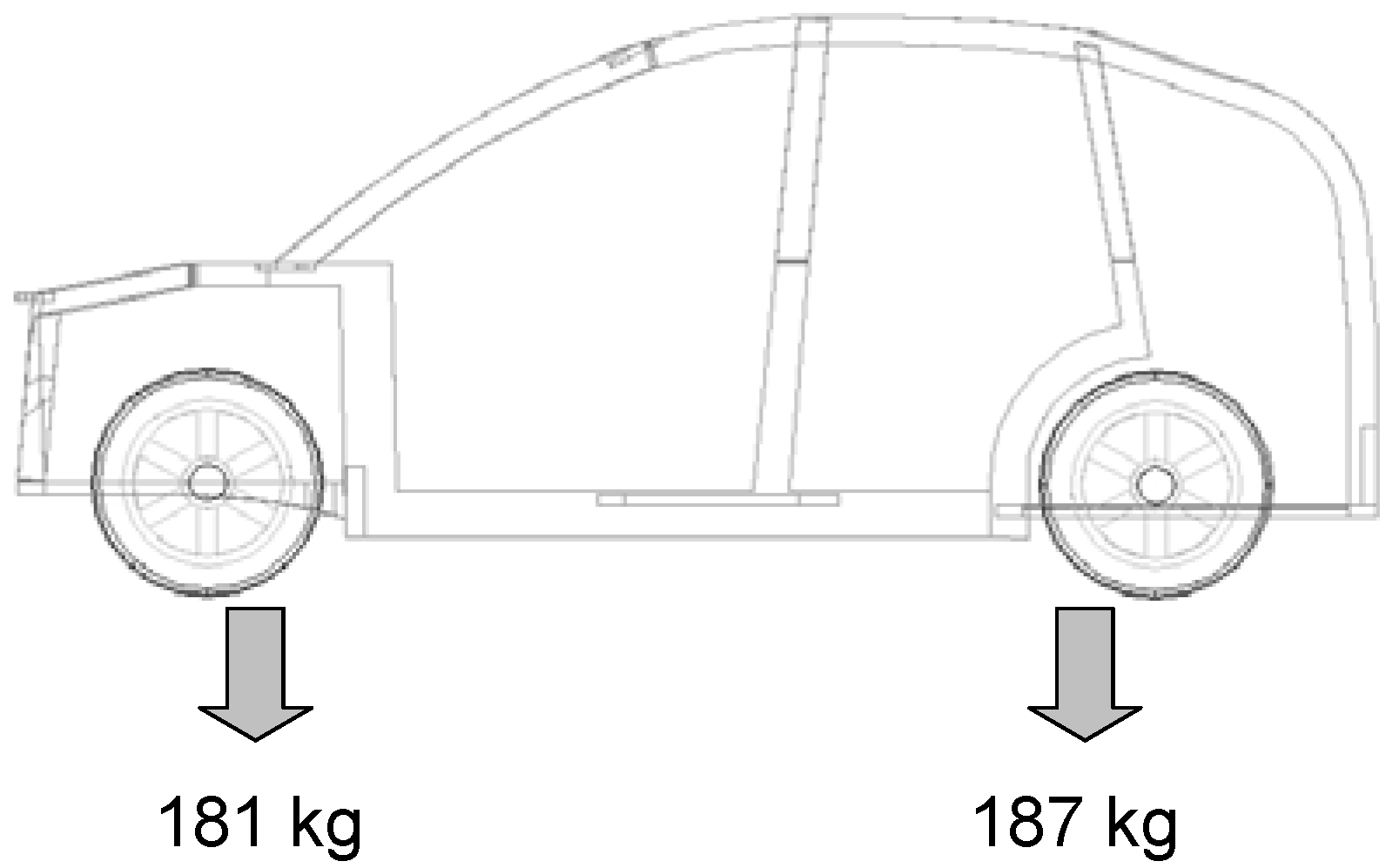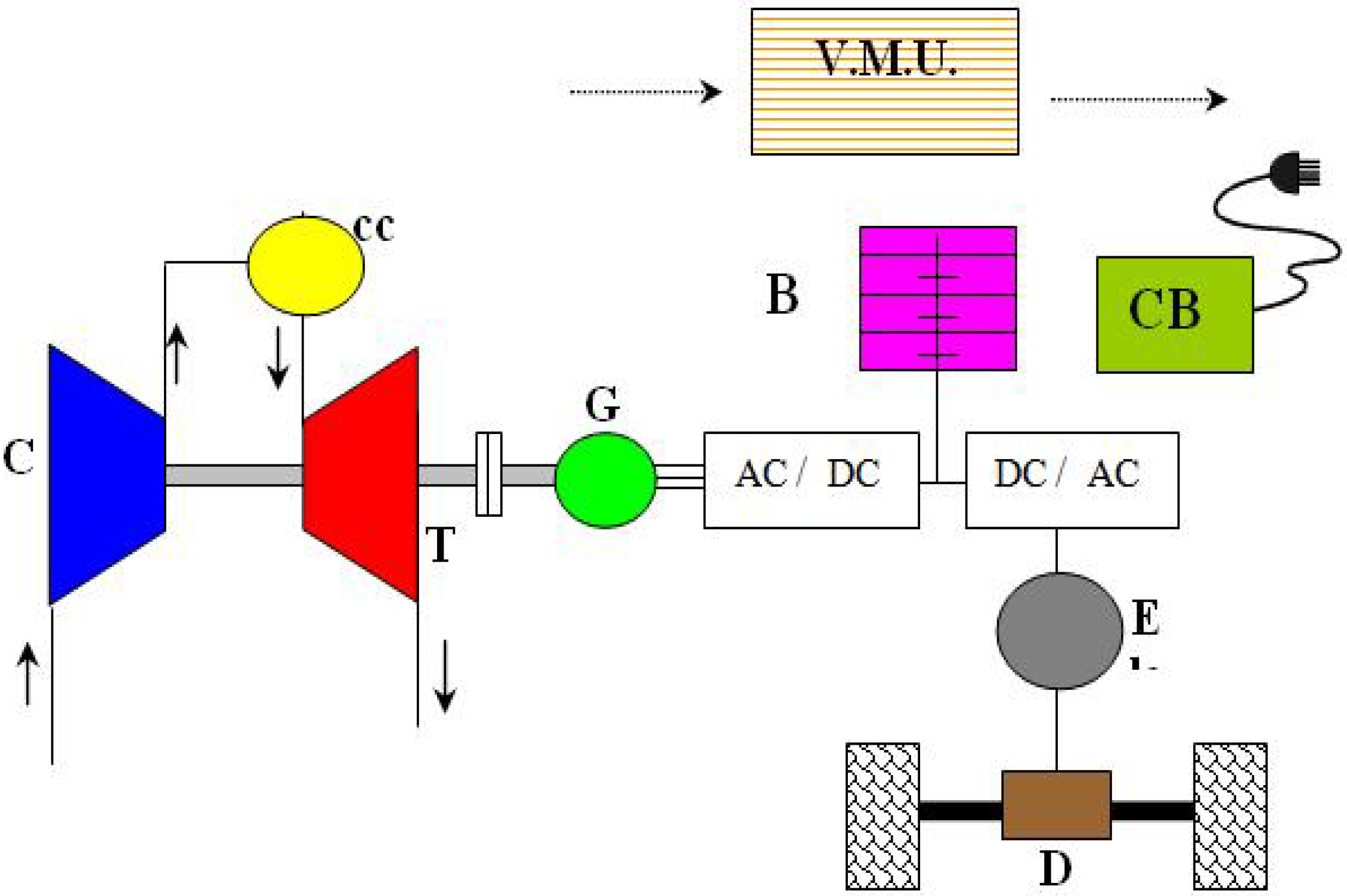The formation of these substances is clearly influenced by the type of fuel used: in fact, the elements present in the fuel are the ones found in smoke after combustion and form unsafe compounds. However, with the same amount of fuel, the thermo-physical characteristics of the combustion process are what determine the composition of combusted gas. Some of these substances can in fact be eliminated by simply controlling combustion. In this case, we are referring in particular to nitrogen compounds NO
x and carbon monoxide CO, that are a problem for all the designers of combustion systems, together with unburnt hydrocarbons. These substances, in fact, can only be kept under control by completing combustion in particular conditions [
15].
8.1. Calculation of Emissions for Lethe© Vehicle Configurations
Pollutant emissions are linked to several factors (such as the type of fuel, the combustion temperature, the air/fuel ratio), and can vary depending on operational conditions. The small amount of emissions data available on emissions in off-design conditions refer to a large-plant, where the combustion characteristics are different (pre-mixer, greater compression ratio), while the available data for small plants are only referred to stationary conditions. As an initial approximation, emissions from the LETHE
© vehicles on the various routes were estimated using comparison with emissions from the Capstone turbo-generator C30HEV [
8], having presumed that our GT unit has the same inlet temperature in the turbine, same compression ratio and same speed. The Capstone data (
Table 15) are expressed in g/kWh and refer to a mass capacity of fuel of 2.36 g/s. By hypothesising a linear proportionality between m
fuel (dependent on the P
GT) and the amount of pollutant emitted, emissions at certain set power P
j can be obtained (corresponding to certain m
i) that correspond to the cycle time-steps.
Table 15.
Emissions from the Capstone C30HEV unit.
Table 15.
Emissions from the Capstone C30HEV unit.
| Emissions (g/kWh) | CNG | Propane |
|---|
| NOx | 0.194 | 0.396 |
| HC | 0.313 | 0.313 |
| CO | 0.306 | 0.134 |
| PM | 0.003 | 0.003 |
It was also presumed that the GT unit is regulated by variation of the fuel capacity, maintaining the turbine inlet temperature constant. For this reason, the emissions in the Off-Design operational mode will also be calculated using linear proportionality with emissions at the nominal point of the C30HEV, increased by a safety factor that is presumed to be 50%. With reference to NO
x emissions, for the C30HEV:
Therefore,
indicating the instant consumption of the GT unit (depending on the power issued and by η
GT) with C
t, LETHE.
The total NO
x emissions are obtained by adding these all “instant” emissions over the entire mission, divided by the GT switch-on time:
Finally, in order to obtain the emission level in g/km, as stated by the EURO regulations on emissions:
By repeating the same procedure for other substances, the results obtained for a LETHE
© Sedan vehicle configuration on a mixed route can be provided (
Table 16).
Table 16.
Emissions from the LETHE© Sedan on a mixed route.
Table 16.
Emissions from the LETHE© Sedan on a mixed route.
| Pollutants | Emissions (g/kWh) | Emissions (g/km) |
|---|
| NOx | 0.0680 | 0.0120 |
| HC | 0.1099 | 0.0194 |
| CO | 0.1072 | 0.0190 |
| PM | 0.0011 | 0.0002 |
An initial comparison of the results between the two tables shows that the LETHE
© Sedan emissions are 65% lower than the C30HEV emissions. Although this estimate must be considered as an initial approximation, this result is due to the fact that the GT group supplies less power (10 and 15 kW approximately of nominal power respectively), in addition to having a higher performance, 44% (“on paper”) compared to 29% (“real”) of the C30HEV. Moreover, the Capstone emissions refer to the consumption of fuel at the car’s nominal point, while the emissions of GT unit on the LETHE
© Sedan are the sum of the emissions from instant consumptions. The Off-Design conditions of the turbogas unit, and the efficiency decrease are considered in the calculation for the fuel consumption and are only estimated, increased by 50%. Finally, it is necessary to consider switch-on times of the GT units, compared to the mission time, which are 4138 s for the 10 kW GT and 4641 s for the 15 kW GT, compared to the 6200 s of mission duration. The GT switch-on operations also include the time needed at the “end of mission” to recharge the battery package to the initial SOC. About 1/4 of the mission is therefore carried out in electrical mode, with zero emissions, a condition that naturally contributes to reducing emissions.
Table 17 shows the limit values for emissions set by Directive 98/69/CE [
16].
Table 17.
EURO Directives on Emissions.
Table 17.
EURO Directives on Emissions.
| Normative | NOx (g/km) | HC (g/km) | CO (g/km) | PM (g/km) |
|---|
| EURO 5 | 0.04 | 0.05 | 0.5 | 0.0125 |
| EURO 4 | 0.08 | 0.1 | 1 | 0.025 |
By comparing the emissions obtained for the LETHE
© Sedan vehicles with the EURO5 directive, a reduction of 70% of NO
x, 61% of HC, 96% of CO and 98% of PM is obtained. Considering that emissions are halved with each new EURO Directive, the LETHE
© Sedan vehicle would be compatible with the future EURO 7. Emissions for the LETHE
© City car configuration, on urban routes, are obtained by similar calculations, and are shown in
Table 18.
Table 18.
Emissions from the LETHE™ City Car on urban routes.
Table 18.
Emissions from the LETHE™ City Car on urban routes.
| Pollutants | Emissions (g/kWh) | Emissions (g/km) |
|---|
| NOx | 5.81 × 10−2 | 6.18 × 10−3 |
| HC | 9.39 × 10−2 | 9.99 × 10−3 |
| CO | 9.17 × 10−2 | 9.75 × 10−3 |
| PM | 9.17 × 10−4 | 9.75× 10−5 |
Table 19 shows the percentage reductions of pollutant substances compared to the C30HEV and the EURO 5 Directive. In addition to the reasons provided above, in order to justify such low emissions, it is necessary to consider the switch-on time of the GT unit. On an urban mission during which 11 km are covered in 1959 s, the GT supplies power for only 440 s (including the time required to recharge the battery package at the end of the mission), therefore more than 3/4 of the mission is performed in electrical mode. The emissions has to be calculated on the entire route, considering both the electrical mode and the hybrid mode (GT switched on), and thanks to the net prevalence of electrical drive, we obtain a low pollutant substances emissions values (
Table 20).
Table 19.
Percentage reduction of emissions of the LETHE™ City Car.
Table 19.
Percentage reduction of emissions of the LETHE™ City Car.
| C30HEV | EURO 5 |
|---|
| NOx | −70% | −84.5% |
| HC | −70% | −80.6% |
| CO | −70% | −98% |
| PM | −70% | −99.2% |
Table 20.
Lethe@ data.
| Consumption | Pollutant Emissions |
|---|
| (km/L) | (L/100 km) | (g/kWh) |
|---|
| 28 | 3.5 | 171 | NOx | −80% |
| HC | −80% |
| CO | −90% |
| PM | −90% |
Table 21.
Capstone C30HEV (diesel) emissions [
8] at full load (g/kWh).
Table 21.
Capstone C30HEV (diesel) emissions [8] at full load (g/kWh).
| Emissions Units | EURO 5 (2008) | EURO 6 (2013) | Capstone C30HEV |
|---|
| NOx | 2.00 | 0.50 | 0.60 |
| CO | 1.50 | 1.50 | 1.17 |
| PM | 0.46 | 0.13 | 0.004 |
Table 22.
CO emissions of commercial passenger sedan (g/km).
Table 22.
CO emissions of commercial passenger sedan (g/km).
| Emission | Punto 1.2 60cv (GPL) | Punto 1.4 Dynamic (GPL) | Passat TSI 1.4 Ecofuel | Civic Hybrid 1.3 i | Insight 1.3 | Prius 1.5 16V |
|---|
| NOx [ppm] | n.a. | n.a. | n.a. | n.a. | n.a. | n.a |
| CO [g/km] | 119 | 115 | 123 | 109 | 101 | 104 |
| PM [ppm] | n.a. | n.a. | n.a. | n.a. | n.a. | n.a |
The analysis of the last two tables (
Table 21 and
Table 22) indicates that a Captone 30HEV gas turbine has lower emissions in comparison with those defined by the European directives (it would readily meet the EURO 6 limits). The comparison with the other currently existing commercial passenger sedans (
Table 18 and
Table 22) is also positive, thanks to the peculiarity of the operational mode of the turbogas group, which is not designed to supply power to the drivetrain, but rather to recharge the battery package (
i.e., as a range extender) or to complement the battery power during power surges.
